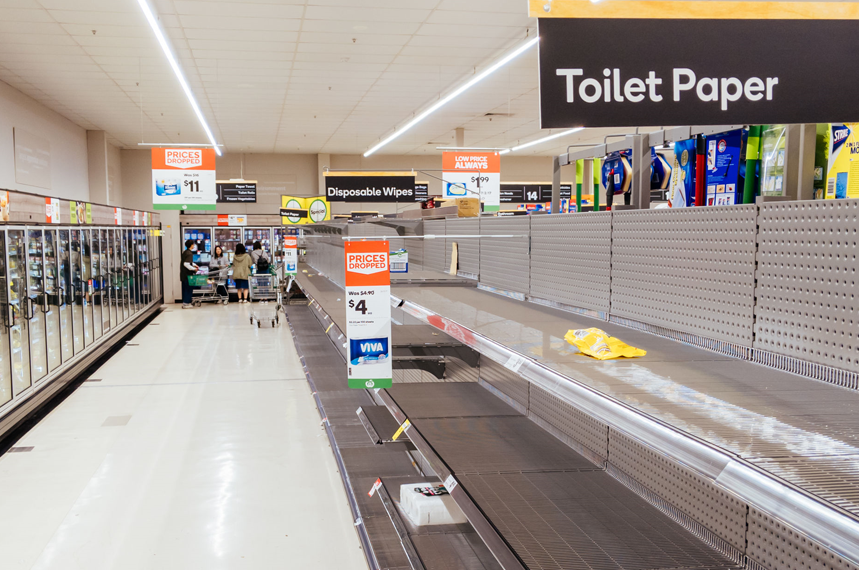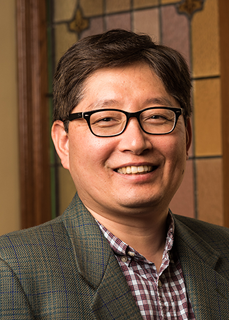Imagined scarcity drives panic buying during COVID-19 pandemic

Marketing and consumer studies professor Dr. Sunghwan Yi explores the factors that contribute to excessive, panic buying during the COVID-19 lockdowns.
When the COVID-19 pandemic first brought the world to its knees in March 2020, incidents of panic buying began to make headlines around the globe. From Brazil to India, hygiene products and grocery staples flew off shelves in record time.
The more cynical among us may attribute panic buying to human selfishness, but marketing professor Dr. Sunghwan Yi takes a more nuanced approach. Yi conducts extensive research into the factors that influence excessive buying. After the outbreak of COVID-19, he was not surprised to witness panic buying around him. “There will always be a small fraction of people who tend to be more unethical and uncooperative, but overall, panic buying stems from a mindset of fear,” he explains.

“People typically adopt a herd mentality in a crisis. When we see others engaging in panic buying in person or on TV, we tend to imitate them without thinking rationally.”
In reality, the COVID-19 pandemic has not significantly disrupted global supply chains. “The scarcity that people feared never materialized,” says Yi. Researchers in his field have coined the term ‘imagined scarcity’ for situations like these. Empty shelves where there were once bags of flour, cans of soup, and packs of toilet paper are the result of the irrational purchases people make in response to imagined scarcity, not an overall decline in supply. “Their reaction to what they perceive to be a problem actually creates a problem at the end of the supply chain,” explains Yi.
Adding fuel to the fire
Media outlets and government officials play an outsized role in determining who succumbs to panic buying, Yi has witnessed. “In the U.S., the mass media tends to depict this issue in a more visually striking, sensational way than in Canada, which may explain the higher incidence of panic buying south of the border,” he says. “Showing scenes of this phenomenon on repeat only sets off a chain reaction.”
Yi can also draw a distinction between countries where the government proactively responded to the virus and countries where the government dragged its heels. “Thanks to quick government action to get the situation under control, we did not see any panic buying in countries like South Korea, Taiwan, and Japan,” he says. “When people trust in the capacity of the government to manage the problem, they are much less willing to engage in this kind of behaviour.” Countries like the U.S. and Brazil, where the federal government has taken far less responsibility for responding to the crisis, have seen more dramatic waves of panic buying. “People feel like they are out for themselves,” says Yi.
A better way forward
As the second major wave of the pandemic sweeps through North America, the risk of panic buying intensifies unless something changes. “We need to regain the sense of camaraderie among citizens,” believes Yi. “That starts with thinking of each other as fellow citizens or neighbours living in the same community, not just consumers, the term that denotes competition for limited resources.”
For media outlets, contributing to a solution may look like cutting down on sensational coverage of panic buying and focusing instead on more positive news, like people sharing necessities with their neighbours. On the government side, responding proactively and decisively to every new wave of the pandemic will assuage public fears.
In grocery stores, keeping a rationing system can prevent excessive purchases and protect supply chains from strain. “We tend to think of rationing as bad in a capitalistic society,” acknowledges Yi. “But even if it is only one percent of the Canadian population that is buying five bags of flour at a time instead of one, we will have a short-term problem.” Retailers and manufacturers, for their part, might consider investing in public awareness campaigns to avoid dramatic shifts in demand by reassuring their customers that their supply chains are stable.
“Ultimately, none of us can end the pandemic without the help of our neighbours,” concludes Yi. “Everyone has to chip in and work to get the message out that there is enough for everyone as long as everyone buys what they reasonably need.”
Dr. Sunghwan Yi is an associate professor in Lang's Department of Marketing and Consumer Studies.
He conducts extensive research on impulsive and compulsive consumer behaviour (e.g., excessive buying, gambling) and the factors that are conducive to successful self-regulation and barriers in the context of impulsive consumption (e.g., gambling, shopping, snacking).
Subscribe to the Lang School's Business Impact Newsletter
Ideas, insights, research and thought leadership from the Lang School delivered right to your inbox.
Subscribe